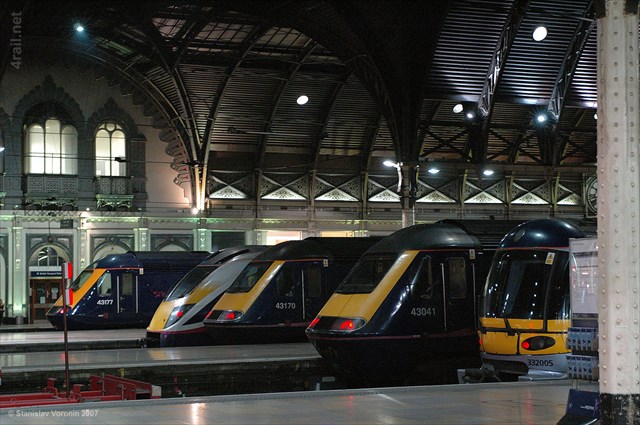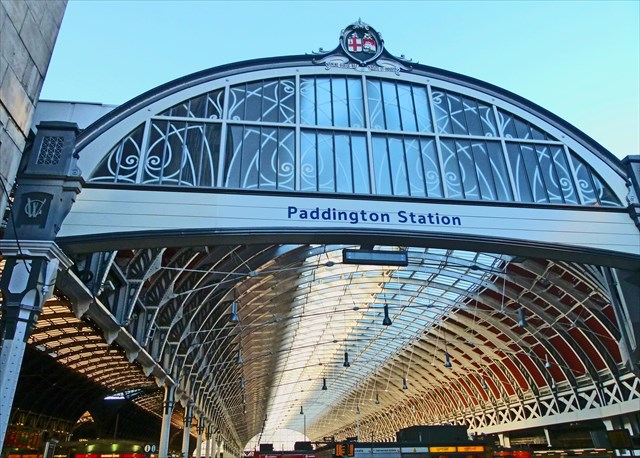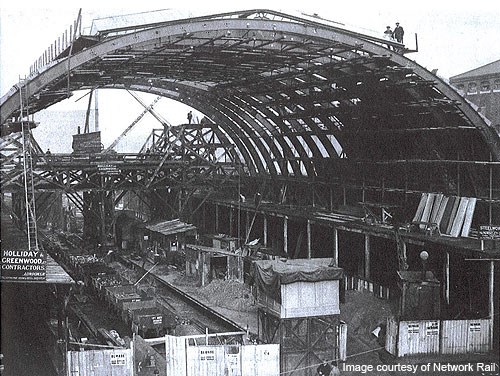SideTracked - London Paddington Traditional Geocache
SideTracked - London Paddington
-
Difficulty:
-

-
Terrain:
-

Size:  (micro)
(micro)
Related Web Page
Please note Use of geocaching.com services is subject to the terms and conditions
in our disclaimer.
SideTracked Caches are intended to provide quick Cache-and-dashes at Train Stations.
This is a magnetic Film Pot hidden close to a newly opened side exit (from the Taxi Deck) at London Paddington Station.
You will be searching for the most found SideTracked Cache in the world. (Source The SideTracked Series).
London Paddington Station
London Paddington station, also known as London Paddington, or just simply Paddington, is a major National Rail and London Underground station complex in the Paddington area near central London, England. It is the seventh busiest rail terminal in London.

The site is a historic one, having served as the London terminus of the Great Western Railway and its successors since 1838. Much of the current mainline station dates back to 1854, and was designed by Isambard Kingdom Brunel. The site was first served by Underground trains in 1863, and was the original western terminus of the Metropolitan Railway, the world's first underground railway.
Despite its historic nature, and the need to preserve many of its features, the complex has recently been modernised, and has added a new role as the terminus of the dedicated Heathrow Express and Connect service to Heathrow Airport.
Location
The station complex is located in, alongside and under a long thin city block bounded across the front by Praed Street and to the rear by Bishop's Bridge Road, which crosses the throat of the main line station on the recently replaced Bishop's Bridge. The west side of the station is paralleled by Eastbourne Terrace, whilst the east side is constrained by the Paddington arm of the Grand Union Canal. The main line station is located in a shallow cutting, a fact that is obscured from the front by the frontal hotel building, but which can be clearly seen from the other three sides.

The station's location is something of a back street one, with none of the bounding streets being major traffic thoroughfares. The surrounding area is largely residential, and contains many of London's hotels. Until recently there has been little in the way of office accommodation in the area, meaning that most of Paddington's commuter traffic interchanges between National Rail and the London Underground to reach its eventual destination in the West End or the City. However, recent redevelopment of nearby derelict railway and canal land, marketed as Paddington Waterside, has resulted in a number of new office complexes in the area.
History
The first station to open in the Paddington area was a temporary terminus for the Great Western Railway on the west side of Bishop's Bridge Road. The first GWR service from London to Taplow, near Maidenhead, began at Paddington in 1838. After the opening of the main station in 1854, this became the site of the goods depot. After years of dereliction, it is now being redeveloped as part of a mixed residential and business area called Paddington Waterside.
The main Paddington station between Bishops Bridge Road and Praed Street was opened in 1854 and was designed by Isambard Kingdom Brunel who was later commemorated by a statue on the station concourse (known as "The Lawn"), despite the fact that much of the architectural detailing was by his associate Matthew Digby Wyatt. The glazed roof is supported by wrought iron arches in three spans, respectively spanning 20.70 m (68 ft), 31.20 m (102 ft) and 21.30 m (70 ft). The roof is 213 m (699 ft) long, and a particular feature of the original roof spans is the presence of two transepts connecting the three spans. It is commonly believed that these were provided by Brunel to accommodate traversers to carry coaches between the tracks within the station. However, recent research, using early documents and photographs, does not seem to support this belief, and their actual purpose is unknown.

The Great Western Hotel was built on Praed Street in front of the station in 1851-1854 by architect Philip Charles Hardwick, son of Philip Hardwick (designer of the Euston Arch). The station was substantially enlarged in 1906-1915 and a fourth span of 33 m (109 ft) was added on the north side, parallel to the others. The new span was built to a similar style to the original three spans, but the detailing is different and it does not possess the transepts of the earlier spans.
On Armistice Day 1922, a memorial to the employees of the GWR who died during the First World War was unveiled by Viscount Churchill. The bronze memorial depicts a soldier reading a letter which was sculpted by Charles Sargeant Jagger and stands on platform 1.
In 1961, the decomposing body of a male child was found in a case at the station. Paper stuffed into his mouth was the cause of death. His identity has never been discovered.
A very early construction by Brunel was recently discovered immediately to the north of the station. A cast iron bridge carrying the Bishop's Bridge Road over the Paddington Arm of the Grand Union Canal was uncovered after removal of more recent brick cladding during the complete replacement of the adjacent bridge over the railway lines at the mouth of the station.
The Station Today
Today Paddington has 13 terminal platforms, numbered 1 to 14 from west to east. Platforms 1 to 8 are located below the original three spans of Brunel's 1854 train shed, whilst platforms 9 to 12 are located beneath the later fourth span. Platform 14 are within the Metropolitan Railway's old Bishops Bridge station, immediately alongside the two through platforms, numbered 15 and 16, used by the Hammersmith & City Line of the London Underground.
Platforms 13 has now been demolished so platform 12 has been extended so the platform can handle the new Hitachi Intercity trains.
Platforms 6 and 7 are dedicated to the Heathrow Express, and platform 14 has also been extended and electrified so it can handle the 5 car class 180's, Turbo trains and Electric trains used on local services. All the other platforms can be used by any of the station's train services. However in normal usage the tendency is for long distance trains to use the western platforms, and local trains (including Heathrow Connect) the eastern ones. All platforms are electrified now with Platform 2 completed over Christmas 2017. New rolling stock has now been introduced onto the line, Local services are mainly Class 387's as result of this change the old turbo stock is being sent to other parts of the GWR. With the introduction of the new Class 800 the HST's will be phased out with a majority going to Scot Rail.
The station concourse stretches across the head of platforms 1 to 12, underneath the London end of the four main train sheds. Platform 14 can be reached directly from the country end of platform 12, or from the footbridge which crosses the country end of the station and gives access to all platforms.
The area between the back of the Great Western Hotel and the station concourse is traditionally called The Lawn. It was originally unroofed and occupied by sidings, but was later built up to form part of the station's first pedestrian concourse. The Lawn has recently been reroofed and separated from the concourse by a glass screen wall. It is now surrounded by shops and cafes on several levels. Though this area is being extensively remodelled at the moment. In February 2017 a new shopping area was opened, this now houses larger shops and allows more natural light in.
The Station is under going further works with the new Crossrail Station that is being built under Eastbourne Terrace. All exits on platform 1 are closed to the public. The old taxi rank has returned to it original location above Platform 12. The roof spans 1 - 3 have undergone a multi million refit, now completed it resembles the splendour of Span 4. Together with the new lighting and the upgraded roof the station will now surely last for many more years to come and enjoyed by all.
Please note that the British Transport Police are aware of the Cache and do often check on it, If you are really lucky or unlucky you may even get to meet the owner!
Additional Hints
(Decrypt)
Byq hcevtug tngr cbfg, oruvaq naq arne gur fvyire cvcr nobhg 5 srrg hc.